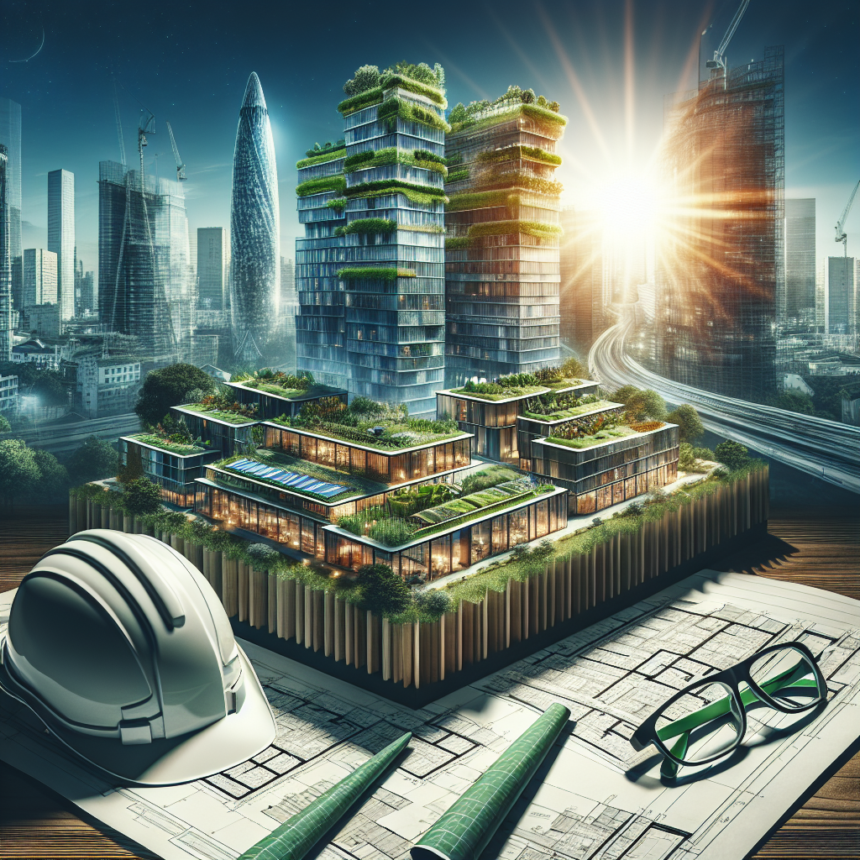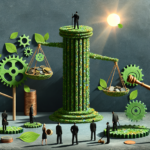Building Tomorrow: The Rise of Green Architecture in Urban Development
As the global population continues to swell, urban areas are transforming into bustling hubs of activity, innovation, and culture. However, with growth comes a pressing need for sustainable practices that can mitigate the environmental impact of urbanization. Enter green architecture—an approach that merges aesthetics with eco-friendliness to create structures that are not just livable but also sustainable. This article delves into the rise of green architecture in urban development, examining its principles, benefits, and examples that are shaping our cities for the future.
What is Green Architecture?
Green architecture, also known as sustainable architecture, emphasizes the efficient use of resources and energy while minimizing environmental damage. The foundation of this architectural philosophy rests on several key principles:
-
Energy Efficiency: Designing buildings that require minimal energy for heating, cooling, and electricity, often utilizing renewable energy sources like solar panels or wind turbines.
-
Sustainable Materials: Using eco-friendly, recycled, and locally-sourced materials that reduce the building’s carbon footprint while also promoting sustainability.
-
Water Conservation: Implementing systems for rainwater harvesting and greywater recycling to ensure that water consumption is reduced and maintained responsibly.
- Indoor Environmental Quality: Creating spaces that offer natural ventilation, adequate daylighting, and low-emission materials to ensure the health and comfort of occupants.
The Importance of Green Architecture in Urban Development
As cities expand, they face numerous challenges, including pollution, waste management, and resource depletion. Green architecture emerges as a vital solution to these challenges. The adoption of sustainable design practices in urban settings offers a multitude of benefits:
-
Reduced Carbon Footprint: By using energy-efficient designs and renewable energy, buildings can drastically cut down on greenhouse gas emissions, contributing to climate change mitigation.
-
Long-Term Cost Savings: Though the initial investment in green building technologies can be higher, energy-efficient designs lead to lower operational costs in the long run.
-
Enhanced Quality of Life: Green buildings promote healthier living environments through improved air quality and access to nature, which can positively impact mental health and overall well-being.
- Community Resilience: Sustainable urban developments can enhance a community’s ability to withstand climate-related challenges, such as flooding and extreme weather.
Innovations in Green Architecture
Several cutting-edge trends are shaping the future of green architecture in urban development:
-
Smart Building Technology: Integrating technology into building designs allows for real-time energy monitoring, automated systems for lighting and heating, and responsive infrastructure that can adjust to changing conditions.
-
Vertical Gardens: As urban space becomes limited, vertical gardens or living walls are gaining popularity. These not only enhance the aesthetic of a building but also improve air quality and reduce heat absorption.
-
Mixed-Use Developments: Combining residential, commercial, and recreational spaces in one location fosters community interaction and reduces the need for transportation, thereby lowering emissions.
- Green Roofs: These help insulate buildings, reduce stormwater runoff, and support biodiversity by providing habitats for various species.
Case Studies of Green Architecture in Urban Settings
Cities around the globe are embracing green architecture in innovative ways:
-
Bosco Verticale (Vertical Forest), Milan, Italy: This residential project features two tower blocks covered in trees and plants that absorb carbon dioxide and provide a habitat for bird species.
-
One Central Park, Sydney, Australia: Known for its cantilevered gardens designed by architect architect and designer, this project integrates nature into urban living, creating a tranquil oasis.
- The Edge, Amsterdam, Netherlands: Often termed the world’s greenest building, this office space utilizes extensive green technologies, including solar panels, rainwater harvesting systems, and smart lighting controls.
FAQs About Green Architecture
1. What is the cost of building a green building?
While the upfront costs can be higher compared to traditional construction, the long-term savings in energy and maintenance often offset initial investments.
2. Are green buildings more durable?
Green buildings are often built with high-quality, sustainable materials, contributing to enhanced durability and longevity.
3. How can I make my home more sustainable?
Start with energy-efficient appliances, install insulation, use sustainable materials for renovations, and consider features like solar power or rainwater harvesting systems.
4. Is green architecture only for new buildings?
No, retrofitting existing structures with sustainable technologies and designs is a widely practiced approach in the green architecture movement.
Conclusion
Green architecture is no longer just an idealistic dream; it is an essential element of modern urban planning. As cities grapple with the realities of climate change, resource scarcity, and population growth, green architecture offers a lifeline to build tomorrow’s communities sustainably and resiliently. By embracing this innovative approach, we take significant strides towards not just surviving but thriving in an increasingly complex world.










